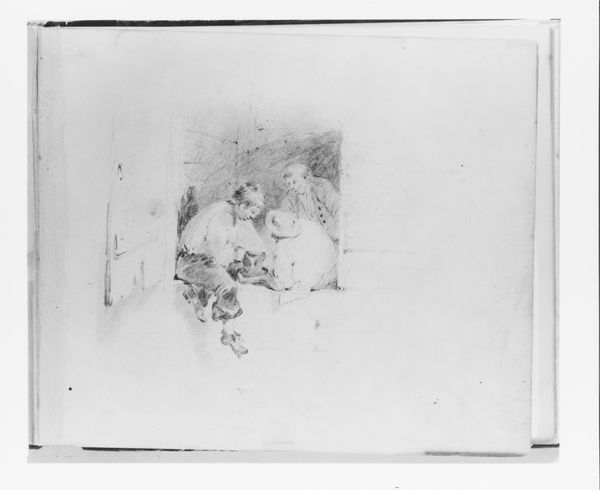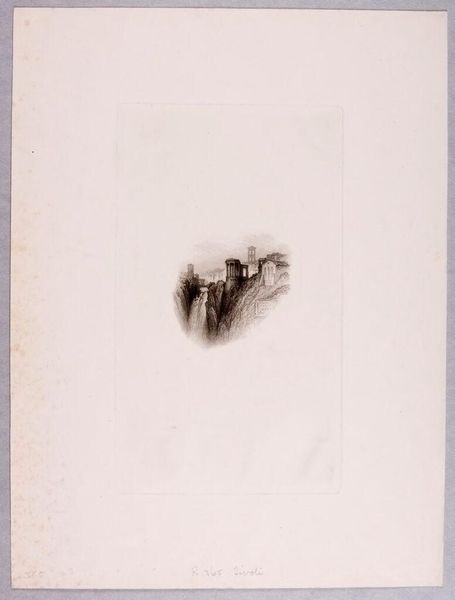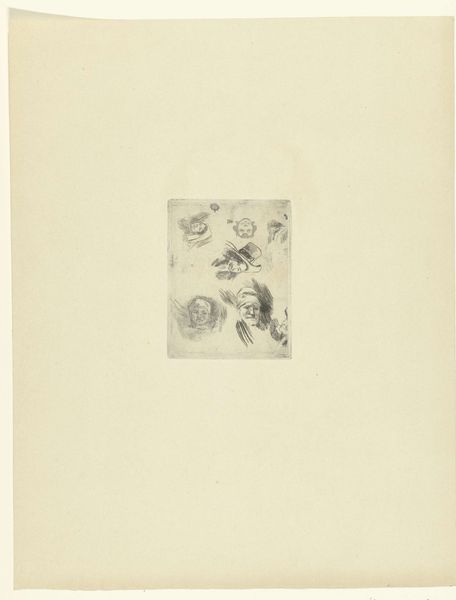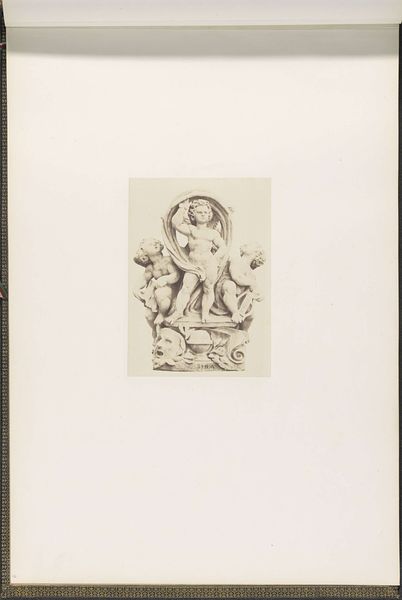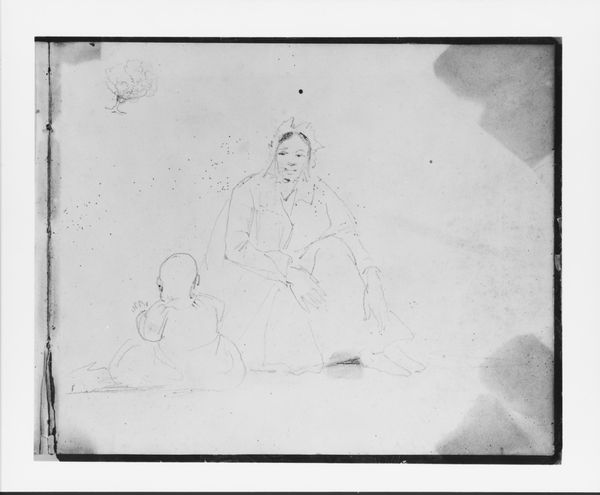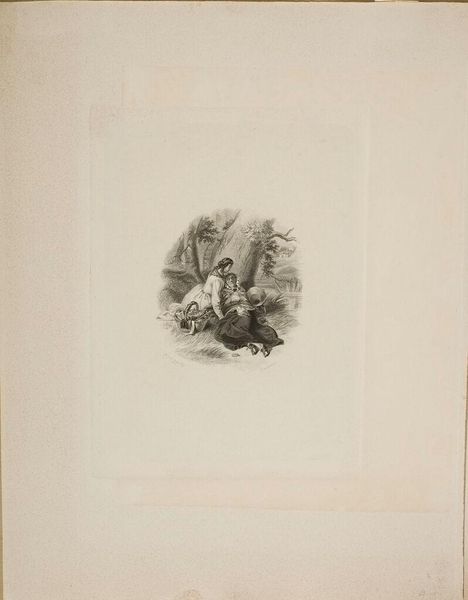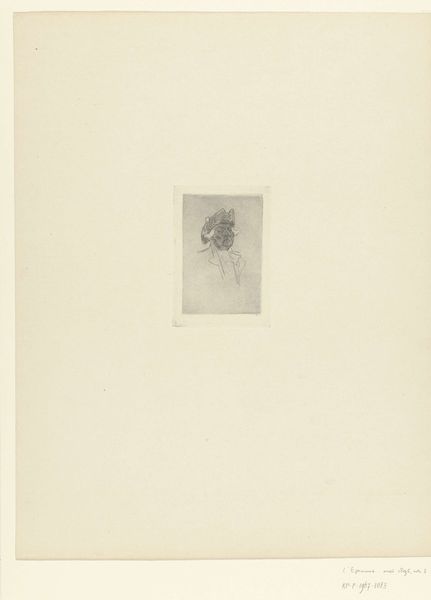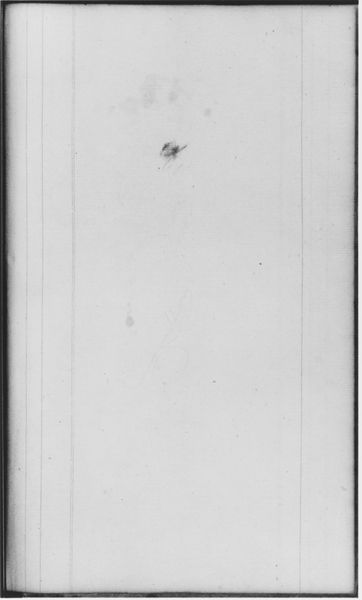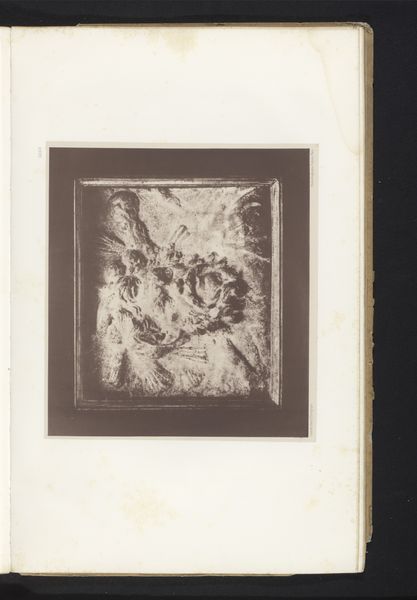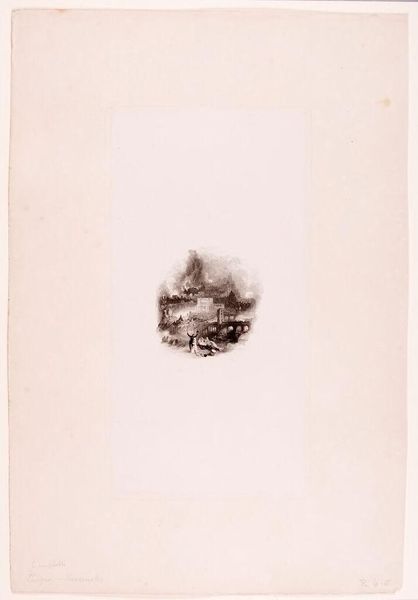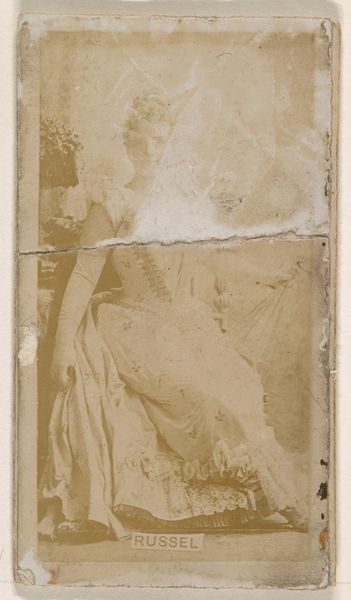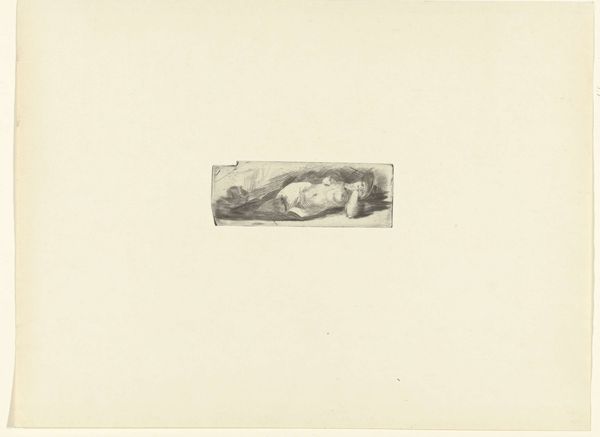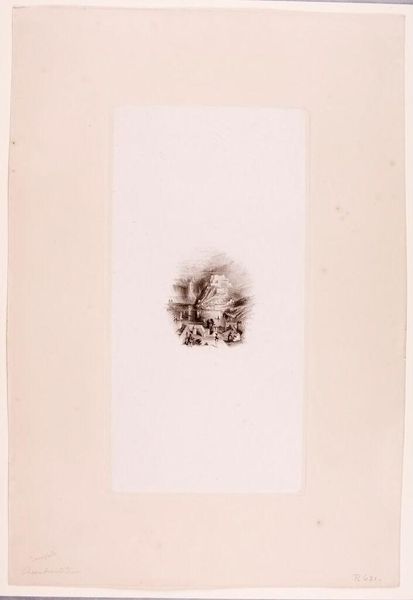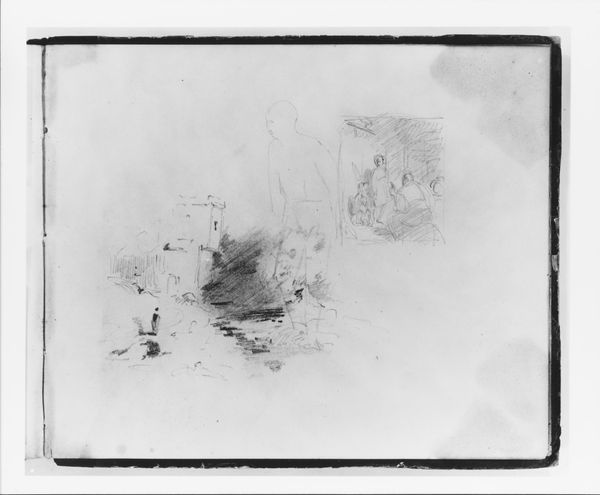
Mythological Figure on Horseback (from Sketchbook) 1811 - 1893
0:00
0:00
Dimensions: Dimensions unavailable
Copyright: Public Domain
Curator: This pencil drawing, titled "Mythological Figure on Horseback (from Sketchbook)," comes to us from the American artist John William Casilear, and dates from sometime between 1811 and 1893. Editor: The energy is quite striking, actually. The sketch lines create a sense of dynamism, almost vibrating off the paper. I'm drawn to the layered strokes, building up the figures organically, the horse most of all. Curator: Considering the period, and knowing Casilear's association with the Hudson River School, I can't help but think about this piece in dialogue with prevalent notions of power and identity. The "mythological" rider atop what appears to be a spirited horse reads perhaps as an allegory for colonial ambitions. What narratives of dominance are woven, even unconsciously, into its composition? Editor: Interesting reading. For me, the interest lies in how the figure and horse seem to emerge organically from the abstract mass of lines. Semiotically, we might consider the absence of concrete form as a deliberate choice, prompting us to contemplate the instability of representation itself. Look at the lack of clear outlines; it pushes us away from traditional notions of classical representation. Curator: The lack of firm representation perhaps underscores a moment of profound ideological questioning, the potential fractures beneath established orders. Remember that Casilear was working in a landscape profoundly shaped by social upheavals around race and class. Can this be a subtle nod to the volatile relationship between those who claim authority and the ground upon which they stand? Editor: That reading certainly brings another layer to the composition. But for me, there’s also an element of pure artistic exploration here, a study of form and motion divorced from direct socio-political commentary. It seems like Casilear experiments here in rendering forms from shadow. The technique, it would seem, is itself the primary subject. Curator: And yet, that very “technique,” its visual language and coded references, it doesn't exist outside cultural currents; the formal and the political, the visual and the social, they necessarily inform one another. Editor: Indeed, this underscores the complex relationship between form and context. I see more acutely now that pure aesthetic judgement doesn't always do the piece total justice.
Comments
No comments
Be the first to comment and join the conversation on the ultimate creative platform.
